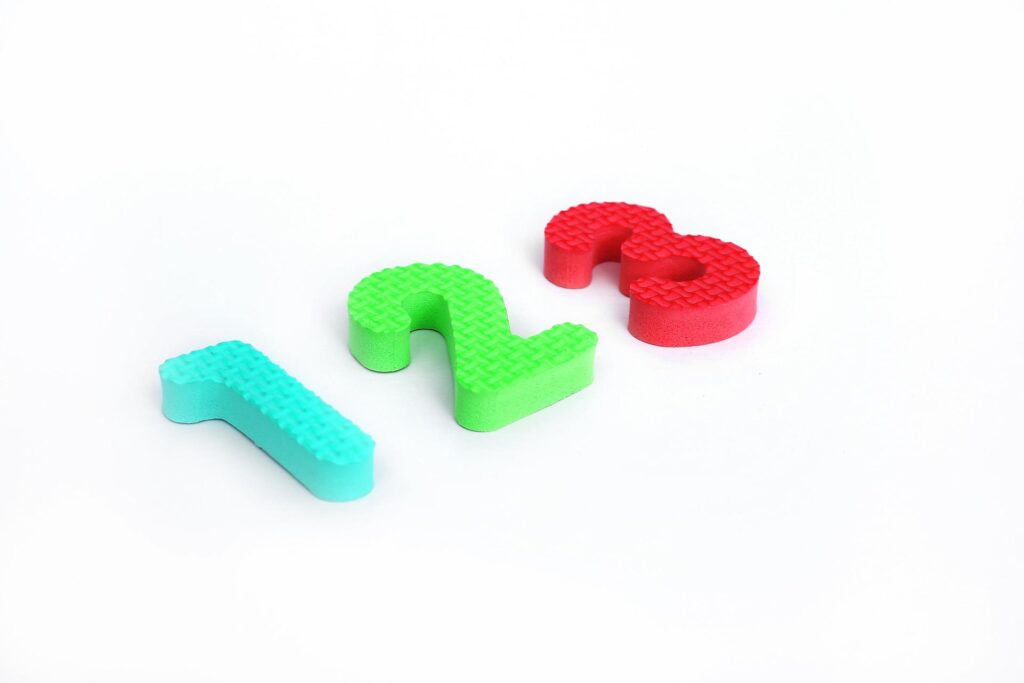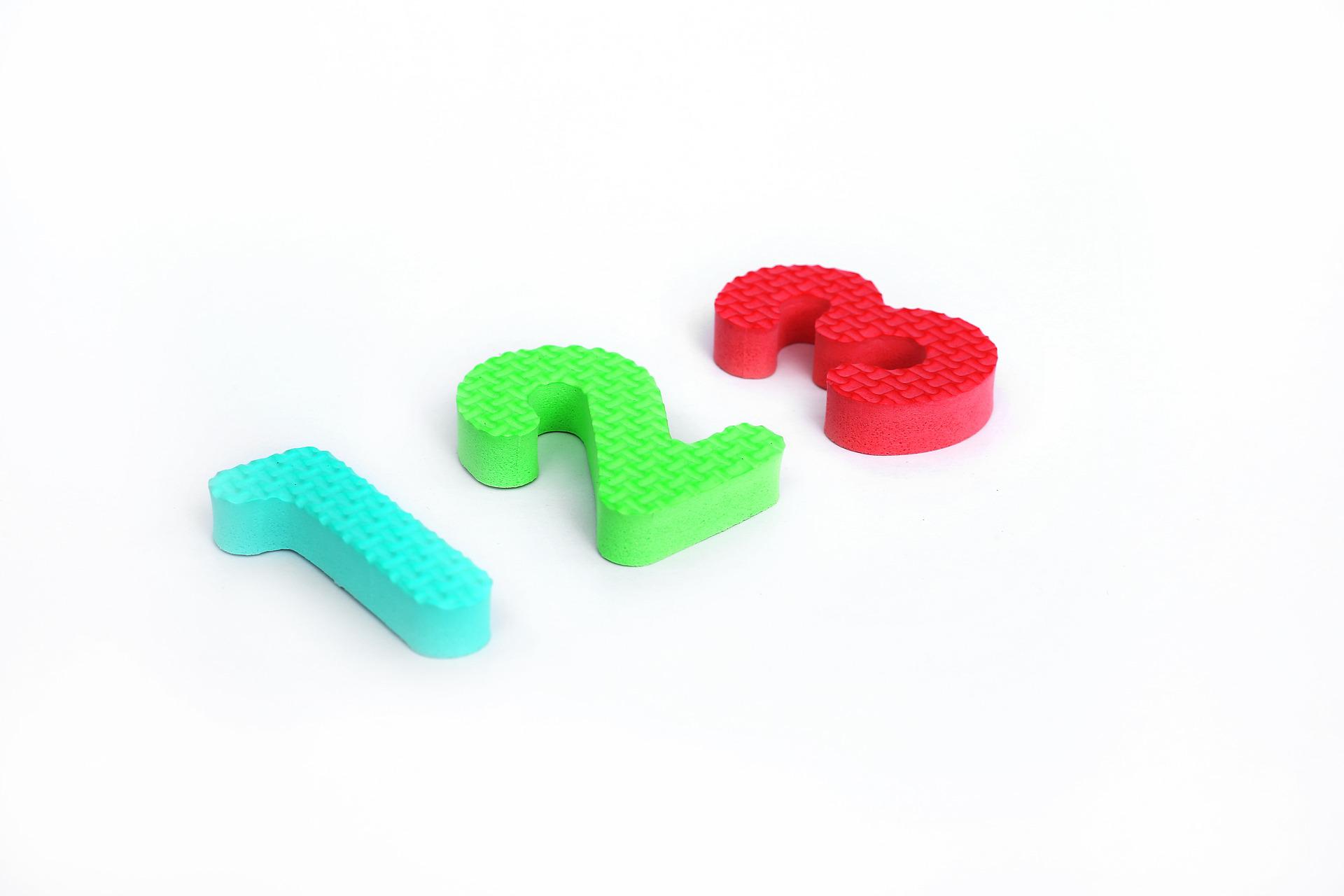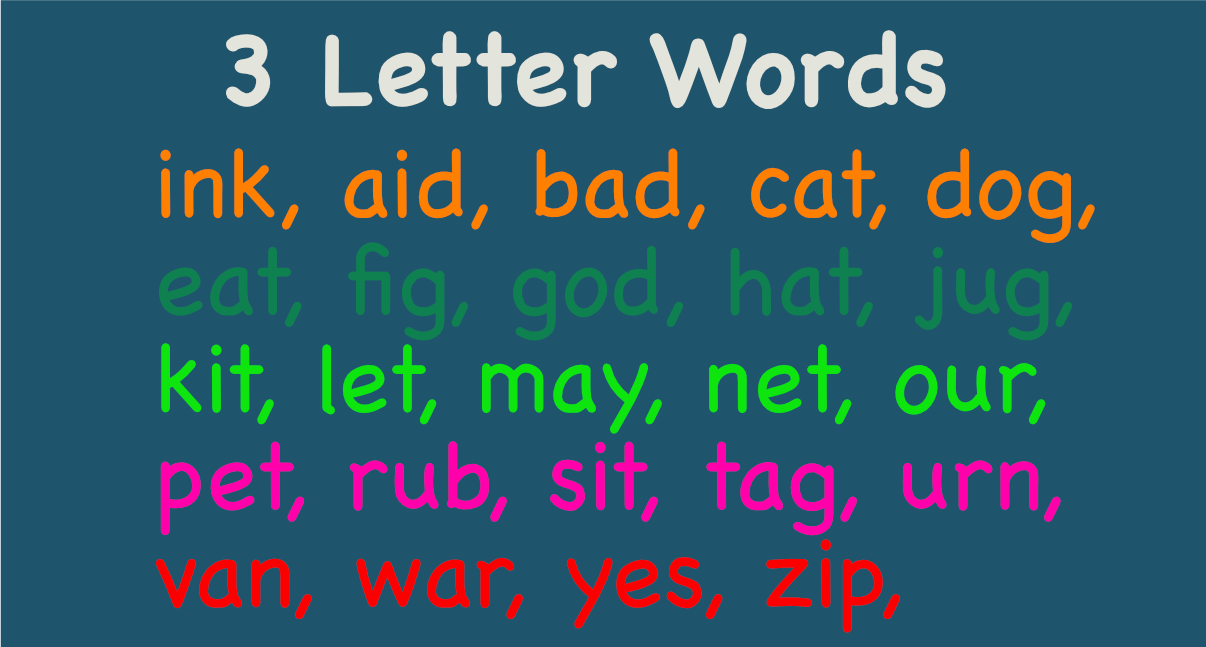
Math is a crucial skill and competence in child development. Studies also show that kids that do well in math tend to perform well academically overall.
Contents
When Is The Right Time To Introduce Math To Your Child?
You may be wondering when you should teach your child math. The key to start at early stage, using age appropriate methods and activities.
Babies
Babies (0-12) start to grasp basic cause and effect, for example when they hear the sound of a running bath they can connect that to time to bath.
At this age babies recognise the numbers of objects in groups even if they can’t necessarily count them.
Toddlers
Toddlers begin to grasp that the concept of how many refers to numbers.
At this stage they can begin to use fingers to should how many years old they are.
Pre-schoolers (ages 3–4 years)
At this age children begin to understand shapes and colors. Their math skill is also growing as they can count up to 10.
Kindergartens (age 5 years)
At this stage kids are able to count with their fingers on one hand and can shift to the second hand to get to 6 and up.
They also identify the larger of two given numbers and can count up to 20.
Age appropriate methods and activities must be adopted for school graders as well going upwards.
Start Early
Dr. Douglas Clements is a professor of Mathematics and Computer Education at the State University of New York, Buffalo. He is also the author of Early Childhood Mathematics Education Research.
He states that, “There are precursors to numerical understanding that children can do at a very young age. For example, research tells us that by 6 to 12 months of age, children can recognize small groups of numbers without counting,”
While there is no magic number, or specific point in the age of the child, the best answer to the question of when to start teaching your child math is that you should start at an early age.
Activities for Your Child Math Education
Here are some suggested activities for your child’s math education. You can begin with the basic concepts and build on them over time.
Hands-On Activities
One of the most effective methods when teaching your child math is hands-on activities.
Whether it’s playing board games or counting M&Ms, children learn new math skills in an exciting way.
Many board games can be easily transformed into fun math lessons. Many dice games are excellent for teaching addition and logical thinking, while puzzles can help them understand geometry and shapes.
By engaging your child in hands-on activities, your child won’t even realize that he’s learning!
Foods are another great way to teach kids different concepts, including angles and shapes.
Children love food, so a fun activity that incorporates math with food is an excellent way to teach this concept.
For example, a child can learn to recognize circles, triangles, and other geometric shapes by cutting slices of pizza into different sizes.
In addition to pizza, you can also use other commonly sliced foods to play different math games.
You can also use the food as a color sorter. Be sure to choose food that is age-appropriate, and take into consideration any food allergies.
Problem solving is a difficult task for children in early grades. While they may be able to recite multiplication facts with a pencil and paper, they often lack conceptual understanding.
The Common Core requires more than rote memorization; children must engage in real-world learning to succeed in college and beyond.
Hands-on math activities encourage children to be curious about numbers and shapes, and they help them develop a love for math and its application in their everyday lives.
Another way to engage your child in math is to make number flashcards.
You can also use Legos or a bag of pasta to play this game. Moreover, you can also use different objects around your home to enhance the learning experience.
Kids find it funny when adults make mistakes! When they see you fumbling with your math lessons, they’ll be able to laugh and understand it better.
Puzzles
One of the best ways to improve logic skills is to use puzzles. You can link the process of solving puzzles to another habit, like eating dinner together.
For instance, you could solve a Moscow puzzle with your family while discussing the concepts of area, perimeter, and volume.
In this way, you can help your child develop the skills needed to make more complex calculations. Here are some great puzzles for young learners:
One of the best ways to engage your child is by using puzzles in the classroom.
These engaging activities help children develop problem solving skills and strengthen logical reasoning skills.
They’re also fun to do with the whole family. They’ll get a sense of accomplishment by solving the puzzle, and you’ll feel good about your child’s math skills.
Moreover, puzzles are a great way to reinforce the concepts that your child has already learned.
You can also use recycled bottle caps as math puzzles.
Labelled with the number 1-9, your child has to arrange the caps in a three-by-three square. If they get three caps in a row, that’s 15! The next puzzle is a triangle.
The numbers on the triangle match up to form a puzzle. There are many solutions to this puzzle. And you’ll have plenty of fun while teaching your child math.
There are many other fun ways to teach your child to enjoy math. Puzzles can be played anywhere, as long as the child has a space for them to play. But the most important thing to remember is to have fun while learning.
Puzzles are great for developing your child’s problem solving skills. But be sure to insist that your child finish the puzzle on his or her first try.
The best way to encourage your child to learn math is to encourage them to enjoy it.
Riddles
Using riddles when teaching your child math is a fun way to introduce new mathematical concepts while strengthening problem-solving and critical thinking skills.
Riddles make learning math more interesting and provide context for new vocabulary. In addition, they can also help your child develop critical reading skills.
And while kids often dislike math, they can be encouraged to pursue it with fun activities.
Riddles are an excellent way to make math fun, while still teaching them a valuable skill.
Riddles help develop mental flexibility, which goes beyond mathematics. Riddles use metaphorical language to describe real-life events or situations.
Solving a math riddle requires decoding these comparisons and metaphors.
Riddles help children understand language more deeply and seek commonalities between various allusions.
For example, five sons share a common sibling. Riddles are designed to target this fear and help kids become successful with math.
Riddles have many benefits. They improve a child’s mathematical reasoning and analytical skills while developing their concentration. Riddles also help your child understand concepts. In fact, Jessica, a math tutor with over a decade of experience, uses riddles to teach kids.
She holds both a BSc and an M.Sc in mathematics. She blogs about math at her website, Brighterly. She has also worked as a curriculum consultant for schools.
A good place to find kids math riddles is online. Online stores offer more variety and more discount prices. You can also check out online reviews.
Most people are comfortable with brands that have high ratings.
And if you’re a new user, you can ask for help from active users. Active users are an excellent resource for practical knowledge gained through usage.
Moreover, active users often provide insights and information that the mainstream media do not.
Music
The right time to use music while teaching your child to count is when the songs are related to the math lesson.
While you should still use traditional methods, some songs may have a special place in the classroom.
Music with rhythm and a steady beat can increase a child’s attention and concentration during math lessons.
This is because the rhythm of the music is linked to spatial-temporal reasoning skills, pattern recognition, and quantitative ability.
Even songs that contain lyrics related to math can help your child learn specific skills, like naming shapes.
When to teach your child math using music? There are two common ways to integrate music and math.
The first way is through song lyrics. You can sing along to songs that feature math, or you can talk about them with your child while they’re doing everyday activities.
Another way to incorporate music into your child’s math lessons is by using videos of songs.
When your child starts to recognize a song they like, you can play it and talk about the math concepts.
While music is an excellent way to connect with a child’s interests, it can also help them develop the skills they need to succeed in math lessons.
Using simple hand-held instruments like tambourines, tom-toms, triangles, rhythm sticks, and marcas can help children discover their love for music and math.
When paired with other methods, music and math can help your child build confidence and develop a strong foundation for success.
Learning math through music can help your child develop spatial and temporal cognition skills. In fact, children can improve their test scores by using instrumental instruction.
Music is also proven to help improve hand-eye coordination and spatial-temporal cognition, which are important for math.
Furthermore, playing an instrument requires an understanding of fractions, ratios, rhythm, and time.
By the time a child has mastered a musical instrument, they can easily learn the concepts that are being taught in a math class.
Common Core State Standards
You may have heard about the Common Core State Standards when it comes to teaching your child math.
But what exactly are they, and why do parents need to use them?
The standards were created after 18 months of study and research. The three main groups involved developed the standards, and then released them for public and expert comment.
The standards were finally approved in June 2010, and were intended to address two key problems.
First, American students are about in the middle of the pack when it comes to academic skills.
Second, American schools are not adequately preparing students to be successful adults.
The Common Core requires teachers to follow a uniform curriculum across the country and in 41 states.
The curriculum is more streamlined, requiring teachers to concentrate on fewer concepts while still making learning more engaging.
Math concepts are built on previous learning, so students develop a global perspective on math.
This helps them develop confidence in their math abilities. However, the standards require a great deal of patience and hard work.
In addition to math, Common Core literacy standards are a must for students. These standards call for students to read and analyze text with evidence and to discuss issues.
They also expect students to write and speak about issues in a variety of subjects, including literature and science.
In addition, they encourage students to read a 50/50 mix of fiction and nonfiction.
These standards are designed to help students build their knowledge of the world and the way it works.
While the Common Core standards have been embraced in various states the same have been met with some controversy and some strong opposition.
It is important to remember that these standards are not federal impositions; they are state-led standards that are designed to help kids prepare for college.
Final Thoughts
Start teaching your child math at a very early stage. The key is to understood age based math competencies of child development.
Based on that find age appropriate methods and activities to teach your child math.
This way to put your child on a solid foundation not only for math but for overall development, literacy and competence.



